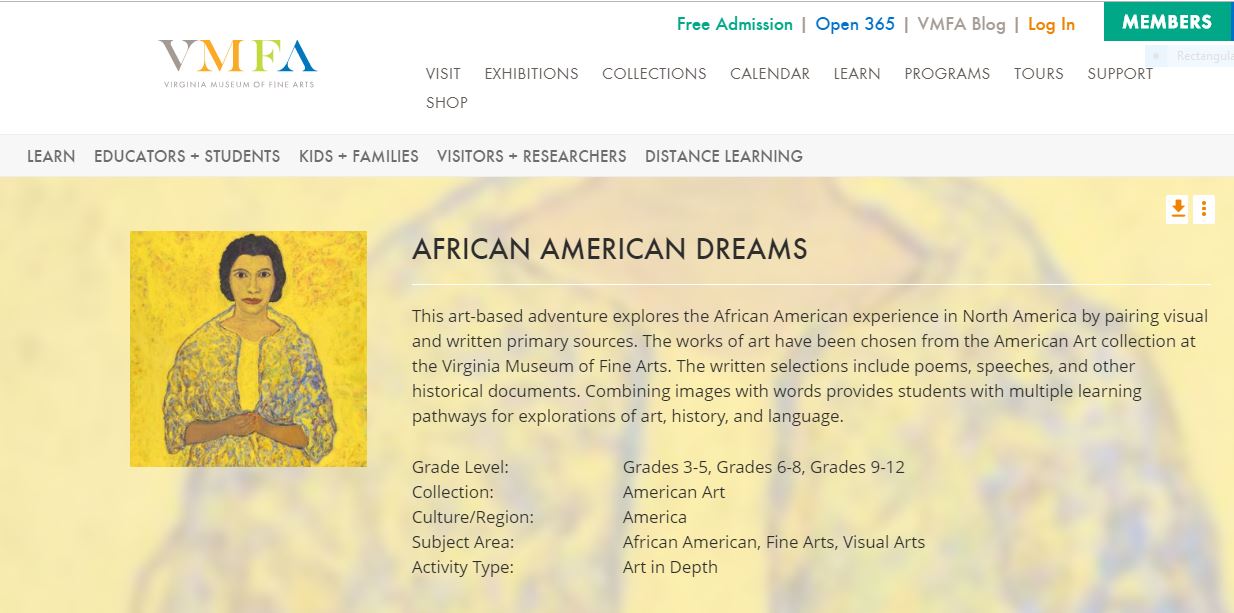Invisible Man and the Harlem Renaissance - Connecting Literature with Visual Art
Visit the Virginia Museum of Fine Art's African American Dreams Art in Depth page to find eight American artworks from the Colonial period through interwar period and the National Gallery of Art's African American Art Collection to view a range of famous paintings by African American artists.
African American Dreams

VMFA website
National Gallery of Art - African American Art
National Gallery of Art - African American Art Collection
Ideas for Classroom Use
Students should explore the artwork from the Harlem Renaissance Period and compare/contrast elements of one or more paintings to Ralph Waldo Ellison's, Invisible Man (or a similar text).
First, select a representative sample of Harlem Renaissance art and explore the painting for visual elements in order to place the piece both in its historical setting as well as to consider how visual art conveys a theme.
Next, students should consider in what ways the in-class text reflects or refutes the historical time period in which it was written, using supporting evidence from both the text and the artwork to defend their claims.
Extension Activity
Students may work together in partners or small groups to create a presentation exploring one of more elements of the Harlem Renaissance in connection with their reading of Invisible Man. Possible presentation topics:
* Explore how the growth in African-American art in general (paintings, literature, music) helped create the foundation for the Civil Rights movement.
* Explore how historical legacies drove the northern migration.
* Explore the connection between musical elements and the writing style of Invisible Man (for example, the infusion of jazz techniques into the writing itself).
* Explore how Ellison's work reflected the historical setting, connecting the text to migration, discrimination, and/or the rise of American socialism.